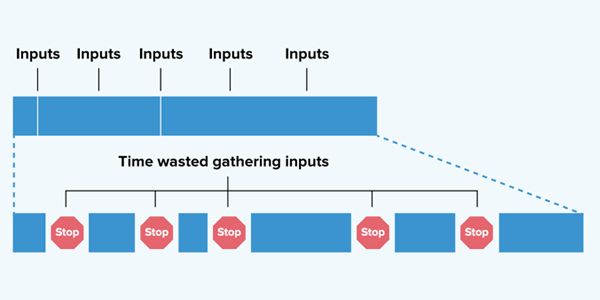The Power of Decision Criteria
Every decision is made based on criteria. Are you and your team conscious of your criteria?
Decision making is at the heart of project management. Doing it well requires skill and awareness of the process. This article addresses decision criteria and the need for up front and formal definition of them as part of a decision-making process. A previous article Get the Right Answers to Make the Right Decisions[1] discussed the need for the right questions to ensure high quality decisions. Among those questions is “what criteria will we use to evaluate options and decide?”
Poor decisions are made when people make them without consciously identifying their decision criteria. This happens at all levels, from individuals to decisions amongst project teams, executives, and members of boards of directors.
The Decision-Making Process
When decision makers are aware of their process it is less likely that they will overlook setting up mutually agreed upon decision criteria.
Being aware of the process means consciously recognizing that there is a set of steps for deciding. One of the steps is agreeing upon the criteria to be used.
There are many variations on the definition of the decision-making process. They share a common theme – consciously understand what you are doing and how you are doing it. Define your process and make it adaptable and flexible. Make it so that later steps influence earlier ones in an iterative refinement process.
Here are nine steps to sum up the process[2]
1) Define values, goals, objectives, and requirement specifications
2) Define the decision making and target environments
3) Agree upon decision criteria
4) Identify solution options
5) Analyze and compare solution options vis-à-vis the decision criteria
6) Decide
7) Implement the decision
8) Monitor and adjust
9) Reflect on the process for lessons learned.
The first step includes the definition of the desired outcome. The second step identifies who will make and influence the decision(s), levels of authority, process, tools, and techniques to use in decision making. It also makes sure that the decision makers have a good understanding of the nature of the environment that the decision will affect – the operational environment. Goals and objectives may be adjusted as step two is performed. Both steps one and two may be refined as criteria are identified. All three are subject to refinement as the process proceeds, as implied in step eight.
What are decision criteria?
Decision criteria are the basis for deciding. They “are the principles, values, rules, variables, and conditions that an organization or team uses to select an option or make a decision.”[3]
Advertisement
[widget id=”custom_html-68″]
Why Define Criteria
Consciously defining decision criteria improves the quality and rationality of decisions.
The criteria always exist. Every decision is made based on some criteria, which may be consciously known or not. Many are prone to subconsciously consider factors that skew their decision. For example, a bias towards reinforcing privately held values may get in the way of reaching a practical decision.
When decision criteria are consciously considered, prioritized, and agreed upon by decision makers, biases can be identified and managed, criteria that may not be immediately obvious can be discovered. Without consciously addressing decision criteria, decisions are suboptimal. They will take longer than necessary to make, and they are more likely to turn out to be ineffective.
Decisions take longer because criteria emerge over the course of discussions rather than at the onset. For example, a team charged with the design of the interior of elevator cars became aware after deciding, but before the design was implemented, that there were design options that were more likely to protect against damage. The team had not directly assessed damage resistance when making their decision. Once aware of the newly identified factors, the original decision was put aside while other options were identified and assessed, causing a several weeks delay.
The team had not explicitly stated their criteria. Informally, everyone had an understanding that aesthetics was the main criterion, with maintainability as a key factor. Cost and availability were also considered. They reviewed several options and selected one. If the decision had been acted upon the team could have made a poor choice that looked good but was easily chipped or cracked. The result could have been costly.
Time and Effort
Besides thinking it is unnecessary, a reason that decision makers do not spend adequate time and effort considering their decision criteria is the perception that it will take too long and that it is overly formal.
The time it takes to define decision criteria depends on the situation. With a team that often works together on similar projects, the criteria for choosing supplier, design, or plan options may be already available in a checklist. Little time would be needed to review the checklist and verify its fit for the decision at hand. If on the other hand the team was not used to working together, was operating informally, and had no checklist, setting decision criteria can be more complex, requiring convincing team members that some formality is needed.
In most cases all it takes to identify decision criteria is a brief brainstorming session among the decision makers, informed about typical criteria for the type of decision they are to make. Going further to evaluate the criteria, prioritizing them, takes more time and effort.
How Formal Do You have to Be?
A formal process improves performance. But how formal is formal?
The minimal degree of formality is to have a written list of criteria. If during the decision-making other criteria come up, add them to the list.
A next level of formality is to weight the criteria to identify priorities among them and then use the weights to score each option, so the score becomes a factor in choosing one.
In all decisions some criteria are more significant than others. Sometimes the degree of significance, the weights, are used informally or unconsciously. With more formality weights are used to calculate scores in a documented process. This brings a greater degree of objectivity to the process, though making decisions purely on the numbers can be unskillful. Do not underestimate the power of intuition, particularly among experienced decision makers.
The degree of formality depends on the complexity and impact of the decision, the team’s confidence in their decision-making process, and their accountability for their decision. In some cases, rules and regulations mandate the documentation of decisions, in other cases it is useful to be able to show others that a rational process was used to make the decision.
How to Set the Criteria
Identifying the criteria for a decision is not a particularly creative process. Use readily available lists via a quick web search for decision criteria lists. For example:
- Performance
- Appearance – look and feel, aesthetics
- User experience
- Stakeholder acceptance
- Cost – of implementation, operation, and replacement
- Benefits
- Risk
- Security
- Maintainability
- Reliability
- Resilience and flexibility
- Environmental, social and governance considerations
- Sourcing and availability
- Time to implement
- Reviews.
Use this list or one that is more specific to your decision as a starting point to craft your criteria.
Bottom Line
Consciously agreeing upon and documenting decision criteria in the context of a defined decision process promotes high quality decisions and avoids unnecessary delays. To apply this principle most effectively tailor formality to the nature of your situation, with the minimum being a list of agreed upon criteria.
[1] https://www.projecttimes.com/articles/get-the-right-answers-to-make-the-right-decisions/
[2] Adapted from Pitagorsky, Managing Conflict in Projects: Applying Mindfulness and Analysis for Optimal Results
https://www.amazon.com/Managing-Conflict-Projects-Applying-Mindfulness/dp/193558958X
[3] How to Write Decision Criteria (With Tips and Examples) | Indeed.com Canada




